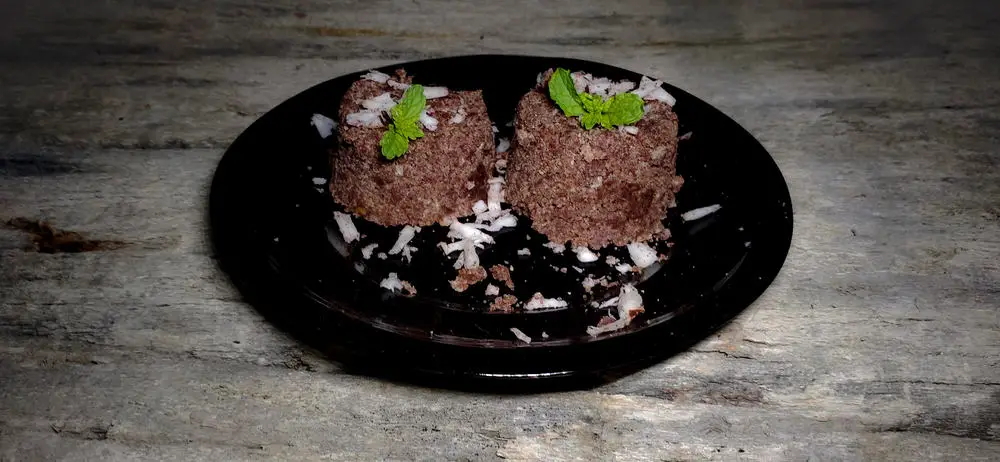What is Ragi Flour Made From?
This flour comes from the ragi plant, which is grown throughout India and Asia. The plant is also known as finger millet in part because the plant is shaped like a finger. While nutritious, ragi has taken a backseat to wheat and other “cereal” crops in India, though it is still commonly used.
The millet ragi is an ancient grain. This means that the kinds of seeds used to make ragi have been around for a very long time. In most cases, ancient grain also means that the type of grain has not been modified or altered in an attempt to make it grow faster or bigger. Ancient grains are typically not processed at all. We think that’s a good thing!

How is Ragi Flour Made?
Making ragi into flour is fairly simple: Crush the plants and remove their seeds – usually mechanically. In some processes, these seeds are then cooked on a large skillet, then dried. The dried and cooked seeds are then ground into flour.
What Does It Taste Like?
One of the reasons why ragi is not as popular in India and other parts of the world is because it doesn’t taste all that great. Ragi has a bit of a bitter taste and has the aftertaste of nuts. To many people seeking the nutritional value of ragi, this isn’t a terrible thing and simply adding seasoning or sweetener to the recipe helps significantly.
Like many kinds of flour, ragi actually doesn’t have a ton of flavor to dishes it is used in. You could add it to a sweet recipe, and you won’t likely notice the slightly bitter taste.
What is Ragi Flour Good For?
Since flour is a bit of a staple of modern food, it’s expected to be used in just about anything. Ragi is a good example of a flour with versatile uses. While we mentioned baking earlier, it’s also useful in making pancakes, bread, and many other items.
Ragi bread can be darker in color, but is moist and delicious. Given the slight bitterness, it’s worth potentially mixing ragi with another kind of flour. You should try ragi bread before modifying it though – you might like it!
Does Ragi Flour Need Refrigeration?
Refrigeration is not required though refrigeration can extend shelf life, assuming your fridge is relatively dry. Otherwise, this flour is good for six months shelf life once it’s been made. Six months is about average for flour, by the way.
Is Ragi Flour Good for Baking?

Ragi is highly useful for many baked items. This flour is commonly used when baking cakes, as it’s healthier than regular all-purpose flour. The best part of a ragi cake is that it not only doesn’t add calories, it’s not overly sweet – as the bitter taste is masked well. Ragi also makes for good cookies.
One thing you might notice: Ragi works well with chocolate because the flour itself is fairly dark – often brown and darker than whole wheat flour. This flour makes chocolate cake and cookies look rich and satisfying – and they are when using this ancient grain flour!
Naturally, you can mix ragi with other flours if you want to make baked items a little sweeter, though you could also add sweeteners like honey.
Health Benefits and Nutrition
Like many other alternatives to all-purpose flour, one of the biggest reasons to use ragi flour has less to do with taste and availability and much more to do with health. As an ancient grain, ragi offers tons of health benefits.
First, ragi has far more protein than all-purpose regular flour. Protein is helpful for those who are trying to either have less carbs and want to rebuild muscle and their brain. While ragi does have carbs, it’s better balanced.
Ragi also have a good amount of fiber. Fiber is very helpful for dieters and people who wish to exercise portion control. Not only does fiber make your bathroom trips more regular and better for you – fiber helps make you feel full, so you don’t overeat. Lighter flours like all-purpose don’t necessarily achieve this.
Does Ragi Flour have Gluten?

This flour is great for people with gluten intolerance. Since it’s made from millet seed, you can enjoy it without digestive issues experienced when eating goods made with regular all-purpose flour.
Is It Keto-Friendly?
Unfortunately, ragi flour does contain a lot of carbs, though they are balanced out by other nutritional benefits. A keto-friendly diet does not typically include this flour – or at least much of it. You can expect nearly half of its content to be carbs.
What is a Good Substitute for Ragi Flour?
All out of ragi? Buckwheat and sorghum flour have similar properties and tastes to ragi, if you are attempting to achieve the same taste.
